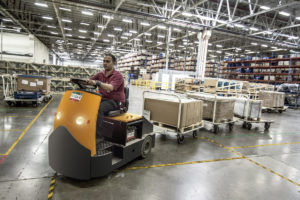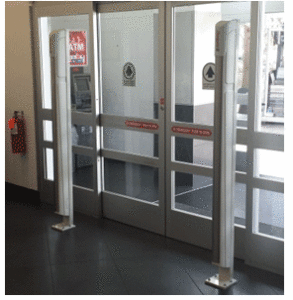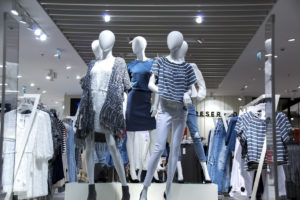 Because like alcohol abuse, both legal and illegal drug use, affects your bottom line. This issue never has a happy ending and it will never go away unless you meet it head-on.
Because like alcohol abuse, both legal and illegal drug use, affects your bottom line. This issue never has a happy ending and it will never go away unless you meet it head-on.
Drug abuse affects your bottom line through poor performance, high numbers of no call/no shows, risk to customer and employee safety, high workers comp claims, bad elements frequenting your business, customers shying away from your business and much, much more.
If you operate in a State that has essentially de-criminalized marijuana use, you have an even bigger exposure. Employees that feel empowered to get high on a frequent basis and come to work in that condition, are a threat to your livelihood. State law does not relieve you of liability. Marijuana use and possession are still illegal under Federal law. Even if the Federal law was to change, you would still be liable for your employee’s actions while they are at work. It is just the same as an employee that is under the influence of alcohol while at work.
But you probably suspected or knew this already. What you cannot do is look the other way. Your plan should start with hiring, as competently as you can. I teach pre-employment interviewing live, via webinar to LPSI customers free of charge. A candidate will likely tell you if they abuse drugs, you simply need to know how to ask the question. These techniques also apply to employee theft from their previous employers. You just need to know how to ask.
A solid Applicant Management Center (AMC) will allow you to keep track of the application and their information. We have an excellent AMC that is also so inexpensive that it is a no-brainer. No more paper applications to keep up with.
Next, you must conduct a background investigation (okay, we do that too). A search of the candidate’s criminal record, credit (if necessary), education and a drug screen will give you a much better idea of who you are hiring.
Drug testing is simple and inexpensive. Our customers approve the candidate for the drug test and our online system allows the candidate to locate and schedule the test at a lab near them. Our nationwide system then tracks the progress. Results are given to you automatically. We can advise you on what substances you should include in your testing. Tests that come back positive are automatically reviewed by an M.D.
So now that this is out of the way, we need to return to the reason why you should require drug testing. Imagine this: one of your employees in the process of doing their job, is under the influence of a substance, and they injure one of your customers, accidentally. In today’s climate that incident will be known far and wide. None of us want to be on the five o’clock news with the headline “Customer injured at insert your company’s name here by an employee that was high”.
Need more? People who use illegal drugs attract other people who use illegal drugs. The whole birds of a feather, flock together scenario. And in my 40+ years of Loss Prevention and Law Enforcement experience, I can tell you that the financial pressure that illegal drugs puts on a person will make them likely to steal to support their needs. Illegal drugs WILL lead to employee theft regardless of how well you think your employees like you and company.
Fix the issue before it becomes a financial drain and a liability to YOUR business and livelihood. Contact us today for more information.
 A Target or Walmart store can and are able to fight shoplifting in their stores every day of the year.
A Target or Walmart store can and are able to fight shoplifting in their stores every day of the year. Some of the most stolen items in stores in the United States are not surprising. From Infant formula to razors, people are stealing these items to sell them for quick cash or because they are shoplifters that are dedicated to doing this crime. Valentine’s Day is approaching, and some of the items that seem to be gifted during this day are among the most commonly stolen items in the United States. A shoplifter will steal any time of the year, whether the opportunity presents itself or not, or whether it’s a holiday or a weekday. As a store manager or employee of a store, greeting and treating a customer politely can gain you a customer, and deter a shoplifter from stealing from your store. Customer service has been proven time and again to be a great deterrent to shoplifters, and cannot hurt to be polite and competent with your regular customers.
Some of the most stolen items in stores in the United States are not surprising. From Infant formula to razors, people are stealing these items to sell them for quick cash or because they are shoplifters that are dedicated to doing this crime. Valentine’s Day is approaching, and some of the items that seem to be gifted during this day are among the most commonly stolen items in the United States. A shoplifter will steal any time of the year, whether the opportunity presents itself or not, or whether it’s a holiday or a weekday. As a store manager or employee of a store, greeting and treating a customer politely can gain you a customer, and deter a shoplifter from stealing from your store. Customer service has been proven time and again to be a great deterrent to shoplifters, and cannot hurt to be polite and competent with your regular customers. I actually like and believe in all three of these things. When it comes to drugs they have to be the legal kind. All of us have seen the destruction that illegally used drugs cause. In a business environment, illegal drug use by an employee not only has an impact on their work performance but creates serious customer and legal issues for employers. An employee that is under the influence of any substance that influences their ability to do their job correctly or safely, will cause customers to question who they are doing business with.
I actually like and believe in all three of these things. When it comes to drugs they have to be the legal kind. All of us have seen the destruction that illegally used drugs cause. In a business environment, illegal drug use by an employee not only has an impact on their work performance but creates serious customer and legal issues for employers. An employee that is under the influence of any substance that influences their ability to do their job correctly or safely, will cause customers to question who they are doing business with.
 With darker daylight hours comes the need for more coffee, the use of lights earlier and a plan to keep crime away from your store or business. Have you considered that one of the following types of crime could affect you?
With darker daylight hours comes the need for more coffee, the use of lights earlier and a plan to keep crime away from your store or business. Have you considered that one of the following types of crime could affect you?

 Could it be that Santa Claus is not always a jolly, giving man? Oh yeah. Take a
Could it be that Santa Claus is not always a jolly, giving man? Oh yeah. Take a  The end of the holiday gift buying season ushers in the inevitable holiday gift return season. Clothes that don’t fit, ugly holiday sweaters no one really wanted, toys that were too old for a young child or too young for the older child all lead to returns, exchanges, and refunds. For those who have been in retail for any length of time, we know that many of these items will be returned without tags or a receipt and not even a gift receipt. It also means people will try to return merchandise to your store that was never even purchased there, despite what the customer in front of you says. This means it is prime time for those who engage in return fraud. There are so many people making returns that trying to separate legitimate refunds and exchanges from the fraudulent ones is difficult. There are steps you can take to minimize the number of fraudulent returns you accept.
The end of the holiday gift buying season ushers in the inevitable holiday gift return season. Clothes that don’t fit, ugly holiday sweaters no one really wanted, toys that were too old for a young child or too young for the older child all lead to returns, exchanges, and refunds. For those who have been in retail for any length of time, we know that many of these items will be returned without tags or a receipt and not even a gift receipt. It also means people will try to return merchandise to your store that was never even purchased there, despite what the customer in front of you says. This means it is prime time for those who engage in return fraud. There are so many people making returns that trying to separate legitimate refunds and exchanges from the fraudulent ones is difficult. There are steps you can take to minimize the number of fraudulent returns you accept.